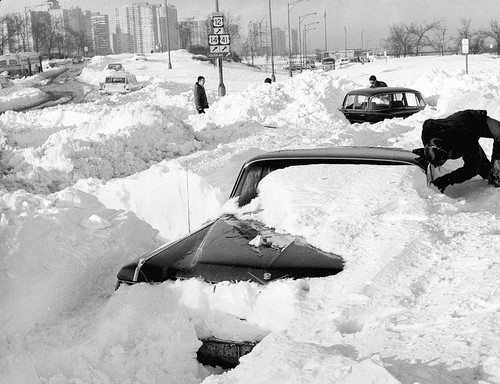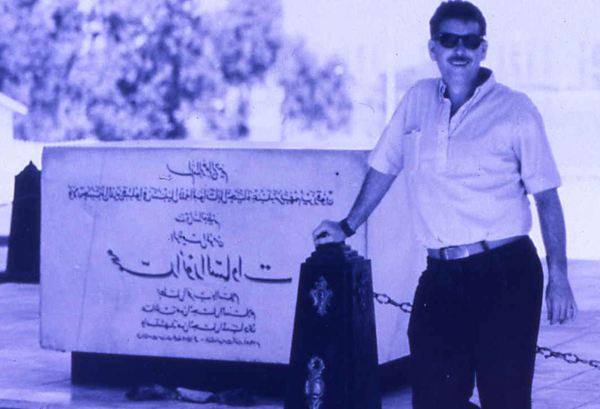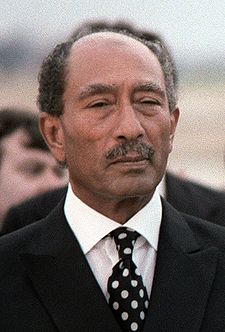03 February 2011
The Bad Storm

(This week’s storm dumped only two inches less than the record of 1967. This one also featured thunder and lightning. Photo Chicago Tribune)
The storm has moved offshore this morning. The brief respite of relatively warm air is is an on-the-ground account from a pal in Chicago:
"This storm is unprecedented in my lifetime. When I woke up it was the 5th
worst in this city's history and has already risen to #3 just a couple
hours later. It is snowing right now about 2 inches and hour so it looks
like it could top out as the biggest storm ever here. Add in the 50 mph
winds last night, and still up to 35 mph now, and I have snow drifts up to
my chest that I can look forward to trying to tackle with the shovel,
undoubtedly in numerous stages throughout the course of the day.
There were people stuck in their cars on Lake Shore Drive last night for 6
hours, with winds gusting to 70 mph along the lake....they had to force
hundreds of people to abandon their cars and they're still towing those
cars away now. It is supposed to be -30 wind chill by tomorrow morning so
that will add another interesting dimension to this....
I know I'm crazy but I'm lovin' this, can't help but feel like a kid again.
I can set up a 6 foot sled hill for the kids in my backyard without having
to actually move any snow.”
The other bad storm is taking a respite. That would be the one in Egypt, where Hosni Mubarak’s thugs and agents provocateur waded into the crowds and stirred things up to the point of gunfire.
Three dead and six hundred injured yesterday. Western journalists were roughed up. I saw on Facebook that one of my professional pals is there, and I hope Vickie is safe as she ventures into Tahrir Square. The Army has stepped up its presence after maintaining their distance yesterday.
The last time I was in Tahrir Square it was tranquil, at least on the surface.

(Socotra at the site of the assassination of Anwar Sadat, Tahrir Square)
I don’t know where this is going anymore than you do. It would seem that the interests of the US are going to take a hit, and those of Israel, to the extent that they are the same, will as well.
So considering that things will go the way they will, it might be useful to understand where this came from.
Hosni Mubarak is the fourth president of Egypt. He replaced a man with a lofty visage that harked to the royal statuary at Luxor- Anwar Sadat.

(Anwar Sadat)
On October 6 1981 President Sadat was assassinated during the annual 6th October victory parade. I am serious. If you talk to the average Egyptian, the crossing of the canal into the Sinai is treated as a victory over the Israelis.
Part of living in the Middle East is the assumption of some extraordinary notions, and that is just one of them. The assassination was carried out by army members who were part of the Egyptian Islamic Jihad Organization.
As air force jets flew overhead, distracting the crowd, a troop truck stopped in front of the Presidential reviewing stand, and a lieutenant strode forward. Sadat stood to receive his salute, whereupon the assassins rose from the truck, throwing grenades and firing assault rifles. Sadat was shot in the head, the assassination operation took around 2 minutes. Two of the attackers were killed and the others were arrested by the military police on-site.
Lieutenant Khalid Islambouli shouted "Death to Pharaoh!" as he ran towards the reviewing stand and fired point-blank at Sadat. He was later found guilty of the crimes and executed.
Sadat was one of the great wave of rejectionists who were rising in the British Empire with the dream of liberation. Like his contemporaries in greater India, he was imbued with the fervor of independence, and though hs is said to have admired the non-violent strategy of Mohandas Karamchand Ghandi, he was willing to do what was necessary to accomplish his goals.
One of his heroes as a young man was s Zahran, the alleged hero of Denshway, who resisted the British occupation in a farmer protest. According to the folktale, a British soldier was killed, and Zahran was the first Egyptian hanged in retribution. He thought the example of Kemal Ataturk, the first Ottoman military commander to defeat a western army in living memory was the pattern to follow. Ataturk was the architect of the victory over the ANZUS forces at Galipoli, and used his fame as a national hero and Pasha to destroy the Ottoman State and found secular Turkey.
The Ottomans had been allied with the Kaiser in Great Hate I, and it was no secret that Sadat was fascinated by Hitler’s ability to rapidly become a strategic threat to Britain.
As a young officer, he met Gamal Abdel Nasser, and was part of the secret Free Officers Movement dedicated to the overthrow of the British Protectorate. During Great Hate II, he conspired with the Nazis, and helped Nasser and others to overthrow the puppet King Farouk in 1952. Sadat was selected to broadcast the news of the coup to the Egyptian People.
Muhammed Naguib was the first president, but Nasser soon succeeded him and became, and remains the personification of Arab dignity, despite his decisive defeat in the Six Day War of 1967. Of course, as I mentioned, the Egyptians popularly believe the most extraordinary things.
So be it. Nasser’s nationalization of the Suez Canal from the British and French merchants (with the tacit support of the Americans) made him the icon of global liberation. When he died, long time apparatchik Sadat became the third President, and was expected to be a compliant tool of the Army leadership.
Sadat surprised everyone with swift political maneuvering to make the state his own. He purged the Army, Intelligence and ministries of opposition. He wanted to end the war of attrition over the Canal, and free the Yellow Fleet of fourteen merchant ships trapped at anchor in the Great Bitter Lake by the mines that closed the Canal for eight long years.
Sadat expelled the host of Soviet military advisers from Egypt and whipped his Army into shape.
On Yom Kippur (6 October) 1973, he launched a surprise attack against Israeli forces in the Sinai. Syrian forces went for the Golan Heights in an attempt to recapture the territory lost in the 1967 war. The Egyptian and Syrian performance was striking, and though eventually the IDF completed the complete encirclement of the Egyptian, the Crossing of the Canal is what is celebrated as the great victory, and Sadat was its hero.
He used his popularity as a platform to begin the peace process, re-open the Canal, and eventually sign a peace treaty with the hated Israelis. Sadat was the first Arab leader to visit Israel officially (King Hussein of Jordan was a frequent unofficial guest) and therein lay the seeds of his demise.
He signed the Egyptian-Israeli Peace Treaty in Washington, and while it gained support in Cairo, he become a lightning rod for what was perceived as a betrayal of pan-Arabism. The Arab League expelled Egypt in 1979, and kept it out for a decade.
Islamists were enraged by the treaty. Despite a severe crack-down on the Army by security forces in 1981, the famous Blind Cleric Omar Abdel-Rahman, architect of the first attack on the World Trade center managed to recruit a jihadi cell headed by Lieutenant Islambouli and kept his mouth shut about the plans when he was detained.
Sadat was succeeded by his vice president and long-time comrade Hosni Mubarak, who was wounded in the attack. Sadat is buried in the tomb of the Unknown Solider across the square from the monument that marks the place where he was shot.
So, that is the short story to how Mr. Mubarak got his job, and some of the baggage he has carried across the last three decades. Now, the question is whither the Army in this bad storm? And whither the Arab Street?
The people who live on that street have the capability to believe the most extraordinary things, and we will just have to find out what they might be. I am pretty sure it has nothing to do with what we would like.
Copyright 2011 Vic Socotra
vicsocotra.com | Subscribe to the RSS feed!